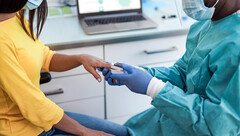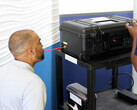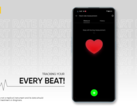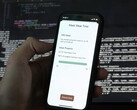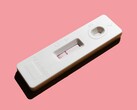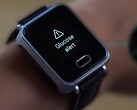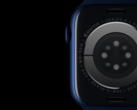The pulse oximeters that hospitals and patients use to monitor blood oxygen saturation in order to determine if their lungs are affected by the COVID-19 virus may be inaccurate for mixed ethnicity groups. Research by multidisciplinary team from the University of Nottingham and Nottingham University Hospitals NHS Trust found out that the pulse oximeter readings of white patients differ much less when compared with a gold-standard blood gas measurement done on the same person. The mean difference between an oxygen saturation measurement with a pulse oximeter versus an arterial blood gas test was only 3.2% in the White group, while it widened to 5.4% for the Black group and 5.1% for the Asian group. In total, the pulse oximeter readings of a Mixed ethnicity group were off by 6.9% compared to the White group with all the diagnosing and treatment consequences stemming from such a large difference.
Pulse oximetry overestimated the oxygen saturations compared to blood gas measurement across all ethnicity groups when arterial blood gas oximetry measured saturations were below 90%, and underestimated these when arterial blood gas oximetry measured saturations were above 95%. These mean differences were particularly marked in the clinically important range when the arterial blood gas demonstrated a true oxygen saturation of 85 to 89%...
Thankfully, the current Omicron COVID-19 strain rarely reaches the lungs, yet oxygen saturation remains a vital indicator of a patient lungs' performance. While doctors are trained to immediately put you on oxygen - or worse, on a ventilator - after a certain threshold is reached, for coronavirus patients that oxygen saturation number seems to be much lower than usual. This is why physicians recommend buying and using a pulse oximeter to avoid the "happy hypoxia" phenomenon where COVID-19 patients are still active and alert, while their lungs are already in bad shape. Since those pulse oximeters consistently over- or underestimated the true oxygen saturation numbers of Black, Asian, or Mixed ethnicity groups compared to the White study cohort, however, this has to be taken into account in clinical settings, the study authors advise:
Our analysis extends the concerns about pulse oximeters giving a falsely high reading in patients with Black ethnicity to those from Asia as well. This is important, as high levels of skin pigmentation are associated with the ethnic groups who have a poorer outcome from Covid-19 infection, and hence would require the most accurate oxygen measurements available to titrate supplemental oxygen and deliver timely treatment. Although these data cannot quantify the impact of these measurement errors of pulse oximetry on clinical care, our experience is that any delay in appreciating the severity of Covid-19 pneumonitis is likely to be detrimental to patient care, especially now that new therapeutic options are becoming available.


